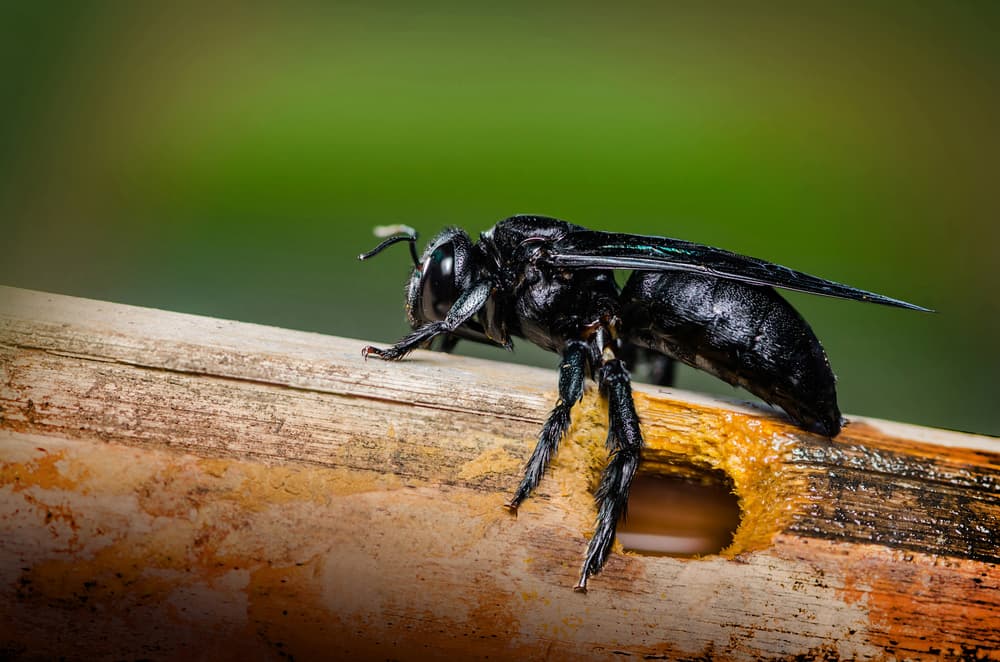Carpenter bees are a frustrating thing to have on your property. They will drill through your wood and make your house less safe. However, these insects are not all bad. They are very unaggressive and will not attack humans even when they come near the nest. They are far more interested in getting rid of other inspects and wasps that may attack the nest and kill the bees.
If you suspect a carpenter bee presence anywhere near or on your property, contact carpenter bee removal Toronto for quick and safe removal.
Identifying carpenter bees is easy as pie. They are shiny and black with a fuzzy yellow ring around their thorax. They are not very large, about the same as a normal honey bee and they make nests inside of wood, not attached to it but actually inside wood with little chambers for their young and to store food.
Carpenter bees are also different from other pests in that they are pollinators. They help our world refresh itself and killing them is something most naturists and scientists believe to be wrong. So if you do have them there are ways to get rid of them or prevent them, without having to kill them with powerful insecticides. You can paint your walls with paint and that will help prevent them from burrowing in the wood, varnish also works very well. If you don’t mind their presence and are just worried about the damage they may cause you can place wood for them to burrow in on your property in places that are far from your house. They will much sooner choose those pieces than a populated house with humans walking around.
Carpenter bees prefer carnivorous wood and that is why they are very common in the US and Canada. They will infest any wood that is not varnished or painted and if the paint is peeling then they are usually able to infest it. They are found everywhere, in bridges, buildings, houses, and even railway tracks where they can cause enormous levels of destruction. Unlike termites they do not eat wood, they survive like all bees on the nectar of flowers.
When the winter comes the bees tend to hibernate in the deepest tunnels in their nest. Come the spring they exit the nest and start to mate and reproduce. The females will stock the chambers with eggs and bee bread and then seal the chamber for the egg to hatch and grow. The egg hatches in about two days and rapidly becomes an adult bee who joins the hive and collects nectar and build tunnels. A society in your wooden deck.

